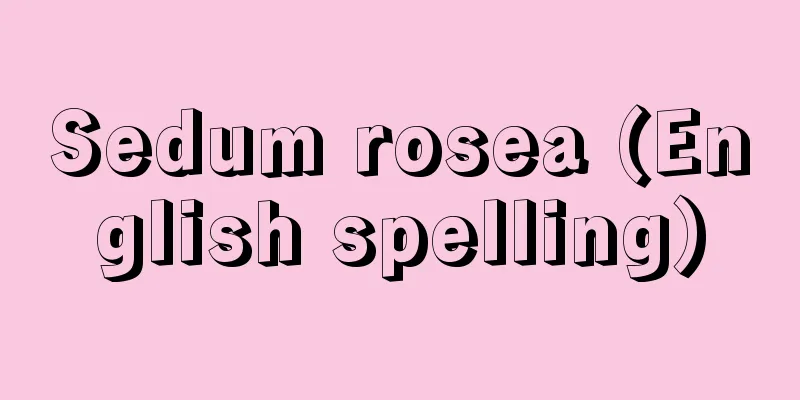Book review - Book review

|
It is a critique of the contents of a new book. It usually includes an introduction of the author, an introduction and analysis of the contents, and an objective positioning, but it also includes impressionistic criticism and selection and comparison of similar books by category or theme. Book reviews were established overseas from the late 19th century to the early 20th century, when the number of publications increased dramatically. Examples include the UK's The Times Literary Supplement (first published in 1902) and The New York Times Book Review (first published in 1896). In Japan, book review magazines such as Shuppan Gekkei Hyō (Monthly Publishing Review) and Nihon Tosho Gekkei Hyō (Monthly Japanese Book Review) were launched in the 1880s, the period when modern literature was established, and at the same time, magazines such as Kokumin no Tomo (Friend of the People), Mesamashigusa, and others began publishing literary reviews. Later, book review papers such as "Nihon Dokusho Shimbun" (founded in 1937, republished in 1945, discontinued in 1984), "Tosho Shimbun" (founded in 1949), and "Shukan Dokushojin" (founded in 1958) were published, while book information magazines such as "Shuppan News" (founded in 1946), "Hon no Zasshi" (founded in 1976), and "Da Vinci" (founded in 1994) were published. In general, reading special features in newspapers and book review columns in weekly magazines are used as guidelines for book selection, and with the increase in book introductions and reviews on television and the Internet, there is an ever-increasing demand for what Ishikawa Tatsuzo called "book reviews are both cultural criticism and reading guidance." [Kida Junichiro] [References] | | |Source: Shogakukan Encyclopedia Nipponica About Encyclopedia Nipponica Information | Legend |
|
主として新刊書籍の内容を批評すること。通常、著者紹介、内容の紹介や分析、客観的位置づけなどが行われるが、印象批評の色彩が強いものや、なんらかのカテゴリーやテーマを設けて類書を選択・比較するものも含まれる。書評は海外では、出版点数が激増した19世紀末から20世紀初頭にかけて成立した。イギリスの『タイムズ文芸付録』(1902創刊)や『ニューヨーク・タイムズ・ブック・レビュー』(1896創刊)はその一例である。わが国では近代文学の成立期である明治20年代に『出版月評』『日本図書月評』などの書評誌が創刊され、同時に『国民之友』『めさまし草』ほかの雑誌が文芸時評を掲載し始めた。その後書評専門紙として『日本読書新聞』(1937創刊、1945復刊、1984廃刊)、『図書新聞』(1949創刊)、『週刊読書人』(1958創刊)などが発行され、書籍情報誌として『出版ニュース』(1946創刊)、『本の雑誌』(1976創刊)、『ダ・ヴィンチ』(1994創刊)などがある。一般には新聞の読書特集や週刊誌の書評欄などが図書選択の指針とされるほか、テレビやインターネットによる図書紹介、書評なども増えており、石川達三のいう「書評は文化批評であり読書指導でもある」という性格が、いよいよ強く求められている。 [紀田順一郎] [参照項目] | | |出典 小学館 日本大百科全書(ニッポニカ)日本大百科全書(ニッポニカ)について 情報 | 凡例 |
<<: Theories on the origins of various diseases
Recommend
Kirrhos
…It is a disease in which the liver becomes hard,...
Haugesund (English spelling)
A port city in the northwest of Rogaland province ...
Childcare and Family Care Leave Law - Ikujikaigokyuugyouho
...However, as the idea that men and women should...
Kaininsou - Kaininsou
→Makuri Source : Heibonsha Encyclopedia About MyPe...
Gustav Theodor Fechner
German scholar. Professor of physics at the Unive...
Fishing net - Amigyog
Among the fishing gear used in fishing, net fishi...
Kutsuki clan
A samurai family from the Kamakura to Edo periods...
Red hare (akausagi)
A general term for animals in the genus Pronolagu...
Boundary (partition) - Kyokai
… Also written as 坂. A boundary that separates al...
Department of Outre-mer (English)
...However, in 1982, under the Mitterrand adminis...
telemeter
…also called telemetering. Measurement performed ...
Axillary bud - axillary bud
...Ferns that grow on the leaves include spider f...
Le Bourget
A town in the Seine-Saint-Denis department in nort...
PAN - Personal Information
[ I ] Abbreviation for 1-(2-pyridylazo)-2-naphtho...
Dilatancy
…Paints are generally made by dispersing pigments...









